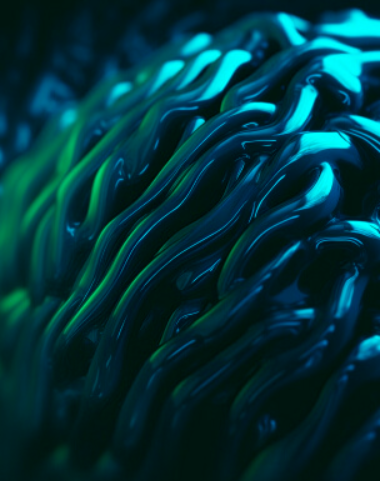Important Factors for Visual Inspection in Pharma: Ensuring Quality and Safety
- Approximately 20% of injectable drugs are recalled due to visual inspection failures.
- Visual inspection is a critical line of defense against contamination and defects.
- Both Manual and Automated Visual Inspection methods have unique strengths and challenges.
- Critical process parameters greatly influence inspection success rates.
- Robust regulatory controls ensure conformity to industry standards.
Table of Contents
- Why Visual Inspection Matters
- Inspection Methods: Manual vs. Automated
- Critical Process Parameters: Setting the Stage for Success
- Human Factors: The Heart of the Process
- Product and Container Characteristics: Tailoring Approaches
- Regulatory and Procedural Controls: Keeping Standards High
- Implementation of Technology: The Future is Now
- Conclusion
Why Visual Inspection Matters
In the pharmaceutical industry, visual inspection serves as a crucial process for detecting foreign particles, container defects, or other anomalies that could jeopardize product safety. This stage plays a pivotal role in ensuring that only the highest quality products reach patients. Regulatory bodies such as the FDA and WHO emphasize the importance of stringent inspection protocols to protect public health. As pharmaceutical professionals, recognizing the importance of visual inspection not only supports operational excellence but also fosters a culture of safety and accountability within the industry.
In this blog post, we’ll unpack the essential factors in visual inspection practices, from inspection methods and critical process parameters to human factors and regulatory controls. Let’s dive in!
Inspection Methods: Manual vs. Automated
When discussing visual inspection, we often encounter two primary methodologies: Manual Visual Inspection (MVI) and Automated Visual Inspection (AVI). Each has its strengths and challenges that can significantly impact inspection efficacy.
Manual Visual Inspection (MVI) remains the standard reference method endorsed by major pharmacopoeias. In this traditional approach, human inspectors evaluate containers under controlled lighting conditions. However, as meticulous as this method can be, it is probabilistic; detection rates rarely reach 100%, especially for small or low-contrast defects (source, source).
Automated Visual Inspection (AVI), on the other hand, is gaining traction as a potent alternative. By employing advanced imaging technologies, AVI enhances throughput and objectivity while minimizing variability associated with human inspection. However, regulatory compliance mandates that manual inspection techniques remain a critical component, especially for challenging product categories (source). The goal for manufacturers is to find a balance between adopting automation and maintaining rigorous standards.
Critical Process Parameters: Setting the Stage for Success
Executing effective visual inspection requires meticulous attention to various critical process parameters. Below, we explore some of the most significant factors:
- Lighting: The lighting conditions under which inspections occur are of paramount importance. Research indicates that lighting levels between 2,000 and 3,750 lux are deemed essential for clear glass containers. For those utilizing translucent plastic or amber glass, even higher intensities—up to 10,000 lux—may be required (source, source).
- Backgrounds: Alternating between black and white backgrounds during inspections improves defect visibility; hence, incorporating this practice into routine protocols enhances detection rates (source).
- Inspection Duration and Cadence: Each unit should be inspected for a predetermined duration (commonly five seconds against each background). Moreover, inspectors should take regular breaks every hour to maintain vigilance and reduce the risk of fatigue-related errors (source).
- Equipment Calibration: Consistent reliability stems from regularly calibrating light sources and timing devices. This ensures the metrics employed during inspections remain accurate and effective (source).
Human Factors: The Heart of the Process
Though sophisticated technology can aid inspection efforts, human factors play a crucial role in achieving high-quality outcomes in visual inspections.
- Training: Inspectors require rigorous and ongoing training to recognize a comprehensive range of potential defects. Their skill and experience significantly influence decision-making consistency, making it essential to invest in their development (source).
- Eye Performance: The resolving power and sensitivity of an inspector’s eyes directly impact detection probabilities. With a typical resolving power ranging from 85 to 100 microns, effective defect identification hinges on inspectors’ visual acuity (source).
- Inspection Environment: The inspection area must remain organized and free of distractions to facilitate clear decision-making. Line clearance is a critical aspect of maintaining an orderly inspection environment (source).
Product and Container Characteristics: Tailoring Approaches
Understanding the unique properties of products and containers is essential for effective visual inspections:
- Container Attributes: Variability in container size, material, and clarity can significantly affect defect detection probabilities. Clear solutions in transparent containers yield the highest detection success (source).
- Product Formulation: Elements such as color, turbidity, and fill levels influence defect visibility, warranting careful consideration when establishing inspection parameters (source).
- Particle Properties: Factors including size, shape, color, and density directly impact detection capabilities. Notably, reliable detection for non-fibrous particles typically requires diameters of 150 microns or larger (source).
Regulatory and Procedural Controls: Keeping Standards High
To uphold the integrity of visual inspection processes, manufacturers must implement robust regulatory and procedural controls:
- Documentation: A well-documented inspection process is a non-negotiable. Every aspect of the examination—parameter settings, distances from light sources, etc.—must be codified according to regulatory guidelines, such as USP <790> for parenterals (source, source).
- 100% Inspection Requirement: A stringent requirement mandates that every container must undergo individual inspection to identify visible contamination or defects. Stringency in this area is a hallmark of pharmaceutical safety (source).
Implementation of Technology: The Future is Now
The advent of technology has transformed visual inspection processes, introducing advanced systems that bolster reliability and efficiency:
- Advanced Inspection Tools: Machine vision, automation, and image analysis are increasingly integrated into visual inspection protocols. These technologies aim to enhance detection capabilities while alleviating human error (source).
- Inspector Aids: Employing physical tools or inspection kits can optimize viewing angles and mitigate human variability, enhancing the overall effectiveness of inspection efforts (source).
Conclusion
Effective visual inspection in pharmaceutical manufacturing hinges on a multifaceted approach that emphasizes stringent human training, controlled environments, careful consideration of product properties, robust documentation practices, and the strategic implementation of advanced technologies. By adhering to these important factors, companies can uphold quality, ensure patient safety, and maintain regulatory compliance essential to operating within regulated environments (source, source, source, source).
If your organization is looking to enhance its engineering services for visual inspection or needs expert guidance in Pharma, Biotech, or Food Tech sectors, consider exploring QPS Engineering’s offerings. Connect with our team via LinkedIn today!







